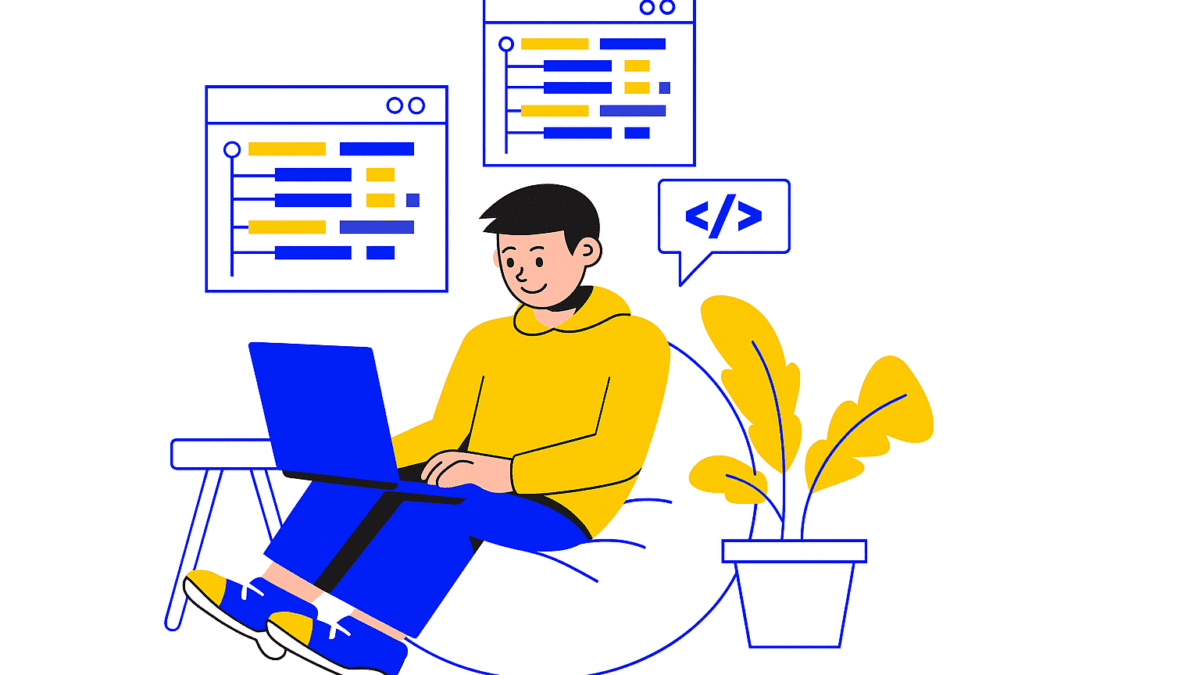Introduction
In 2025, vibe coding has emerged as one of the most intriguing and disruptive trends in software development. Unlike traditional coding, vibe coding allows developers to delegate most of the code-writing to advanced large language models (LLMs), guiding the process with high-level natural language prompts. In essence, developers “go with the vibe” and focus on iterating through AI-generated code rather than crafting every line themselves .
This blog explores the fundamentals, benefits, challenges, real-world use cases, and best practices of vibe coding—providing insightful analysis for IT professionals seeking to stay ahead.
What Is Vibe Coding?
Coined by AI expert Andrej Karpathy in early 2025, vibe coding describes a programming workflow where developers describe tasks to an LLM, which then generates code. Rather than micromanaging the code structure, developers evaluate results, test functionality, and request improvements—all through iterative, natural language prompts.
Karpathy famously summarized the approach: “fully giving in to the vibes, embracing exponentials, and forgetting that the code even exists.” It’s a shift from manual coding to AI-facilitated prototyping and experimentation.
You May Also Like: Your 24/7 Lead Generator: How Whitepapers Drive Continuous B2B Leads
Why Vibe Coding Matters in 2025
- Accessibility & Speed: Vibe coding lowers the barrier to entry for non-experts. Even amateur developers can build functional prototypes by articulating ideas to an AI, without deep programming knowledge.
- Accelerated Innovation: Startups are already adopting vibe coding: in YC’s Winter 2025 batch, 25% of startups had codebases that were over 95% AI-generated. This demonstrates how quickly AI-centric development is scaling in the market.
- Flexibility & Experimentation: Vibe coding encourages rapid iteration with minimal effort—perfect for proof-of-concept projects, internal tools, or one-off utilities. For instance, New York Times journalist Kevin Roose used vibe coding to build a personalized app that suggests lunch items based on fridge contents.
Pitfalls & Risks to Be Aware Of
- Code Quality & Accountability: A major concern lies in understandability. When you’re not writing the code, you may struggle to debug or maintain the AI-generated output—raising risks around security, correctness, and long-term reliability.
- Critics point out that “vibe coding your way to a production codebase is clearly risky. Most of the work we do as software engineers involves evolving existing systems, where the quality and understandability of the underlying code is crucial”.
- Security Vulnerabilities: Using AI-generated code without vetting increases the risk of hidden vulnerabilities. The WSJ and Ars Technica have highlighted cases where vibe coding led to app vulnerabilities and unexpected behavior.
- Misalignment & Miscommunication: The AI might misunderstand nuanced or complex requirements, leading to unexpected or flawed deliverables. This makes vibe coding less suitable for high-stakes or multi-module enterprise systems.
Real-World Applications & Emerging Use Cases
- Rapid Prototyping: Vibe coding is ideal for quickly building demo apps, tool prototypes, or startup MVPs, especially for testing new ideas with minimal overhead.
- Developer Assistants: Even within traditional workflows, vibe coding functions as a powerful “AI pair programmer”—suggesting complete functions or modules when prompted.
- Personal Tools & ’Software for One’: Tools tailored to unique personal needs—like Roose’s fridge‑to‑lunch app—are becoming popular, especially for productivity or lifestyle hacks.
Best Practices for Using Vibe Coding Responsibly
To benefit from vibe coding while minimizing risks:
- Use for Prototyping, Not Critical Systems: Keep vibe coding in the sandbox—don’t deploy it directly to production without thorough review.
- Review Thoroughly: Always review AI-generated code line by line. Test aggressively to catch unexpected errors.
- Combine with Traditional Practices: Blend vibe coding with best practices: documentation, code reviews, and modular structure.
- Educate Your Team: Make sure everyone understands vibe coding’s capabilities and limitations.
- Plan Transition to Maintained Codebase: After prototyping, refactor AI-generated code into a maintainable structure with human oversight.
The Future of Vibe Coding: What’s Next?
As LLMs become more sophisticated, vibe coding could evolve in exciting ways:
- Integrated IDE Plugins: Expect seamless integration into development tools—visualizing vibe code flow, debugging AI output, and tracking prompt history.
- Domain-Specific Vibe Agents: LLMs that specialize in domains like fintech, e-commerce, or AR/VR will generate more tailored code snippets.
- AI-Human Collaboration Workflows: New workflows could emerge where humans guide high-level design and AI fills in the implementation—creating hybrid lab-to-production pipelines.
Looking ahead, vibe coding may form a new paradigm of “human-in-the-loop” software development—especially for experimental, non-critical, or early-stage work.
Conclusion
Vibe coding is one of 2025’s most significant IT trends—a dramatic shift in how developers interact with code. By letting LLMs take the lead, programmers can iterate faster, democratize development, and rapidly bring ideas to life. But with its promise comes responsibility: thorough review, security vigilance, and disciplined workflow are critical.
You May Also Like: What Makes a SaaS Product Scalable? Lessons from 2025’s Top Tools





